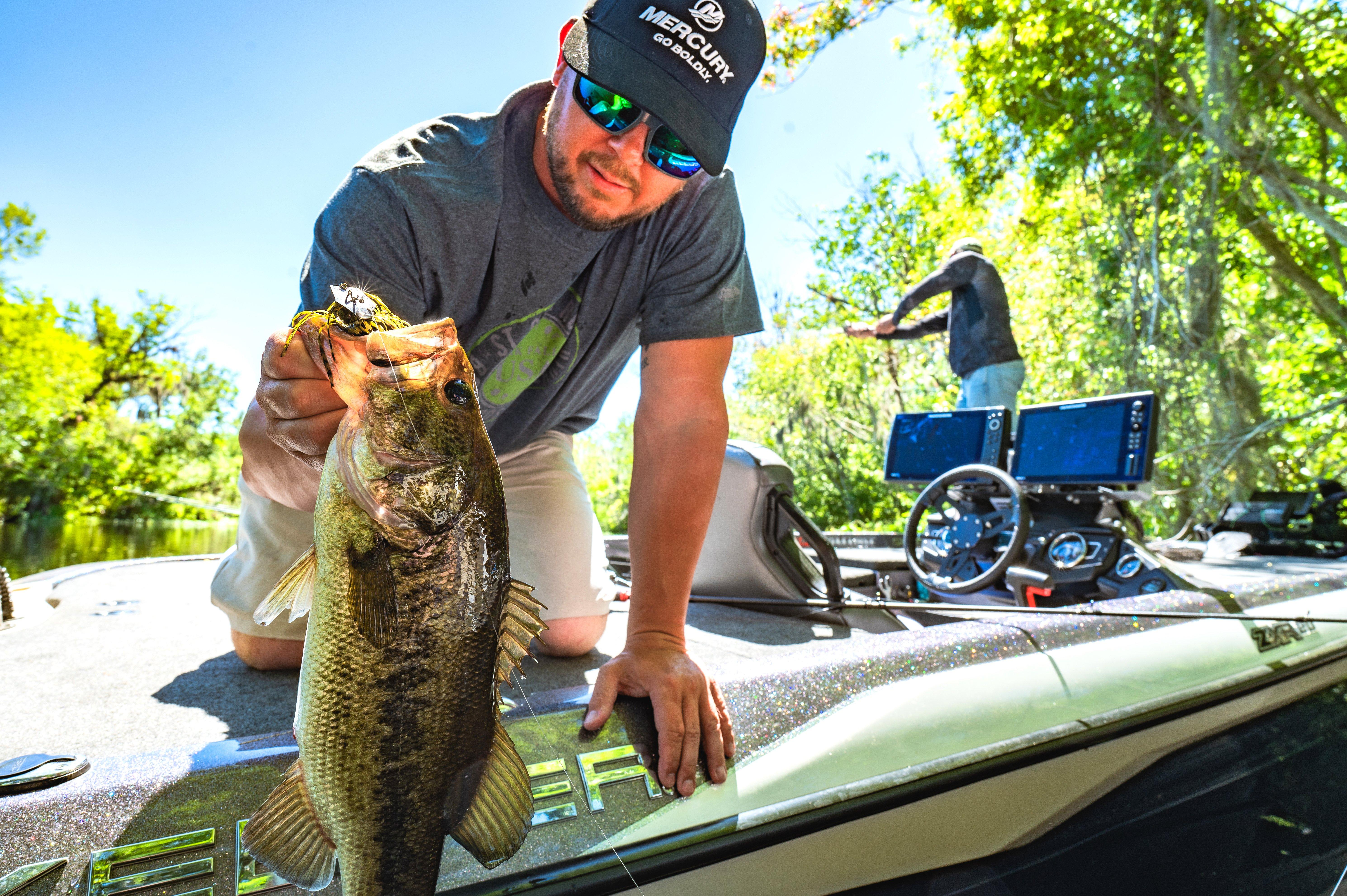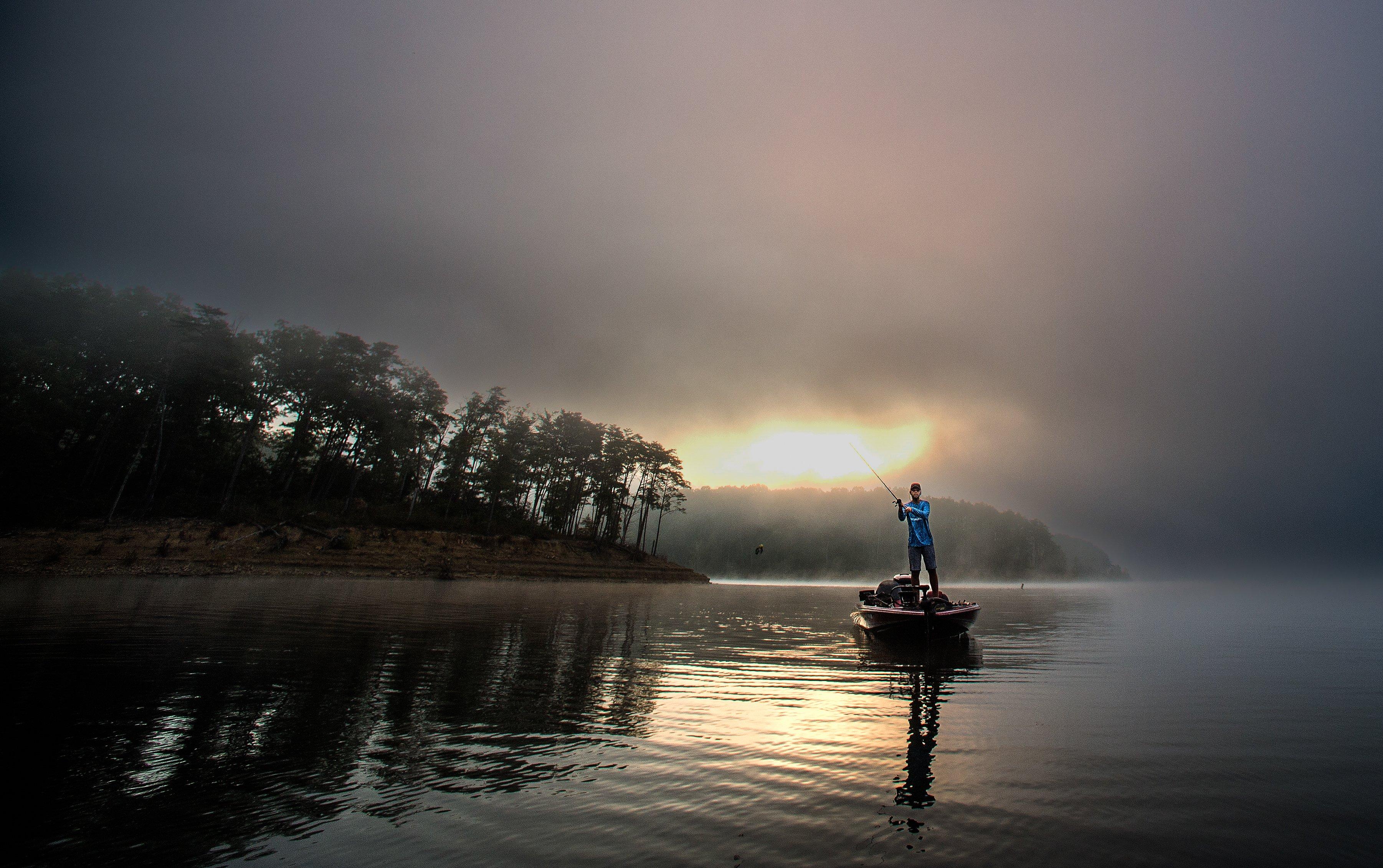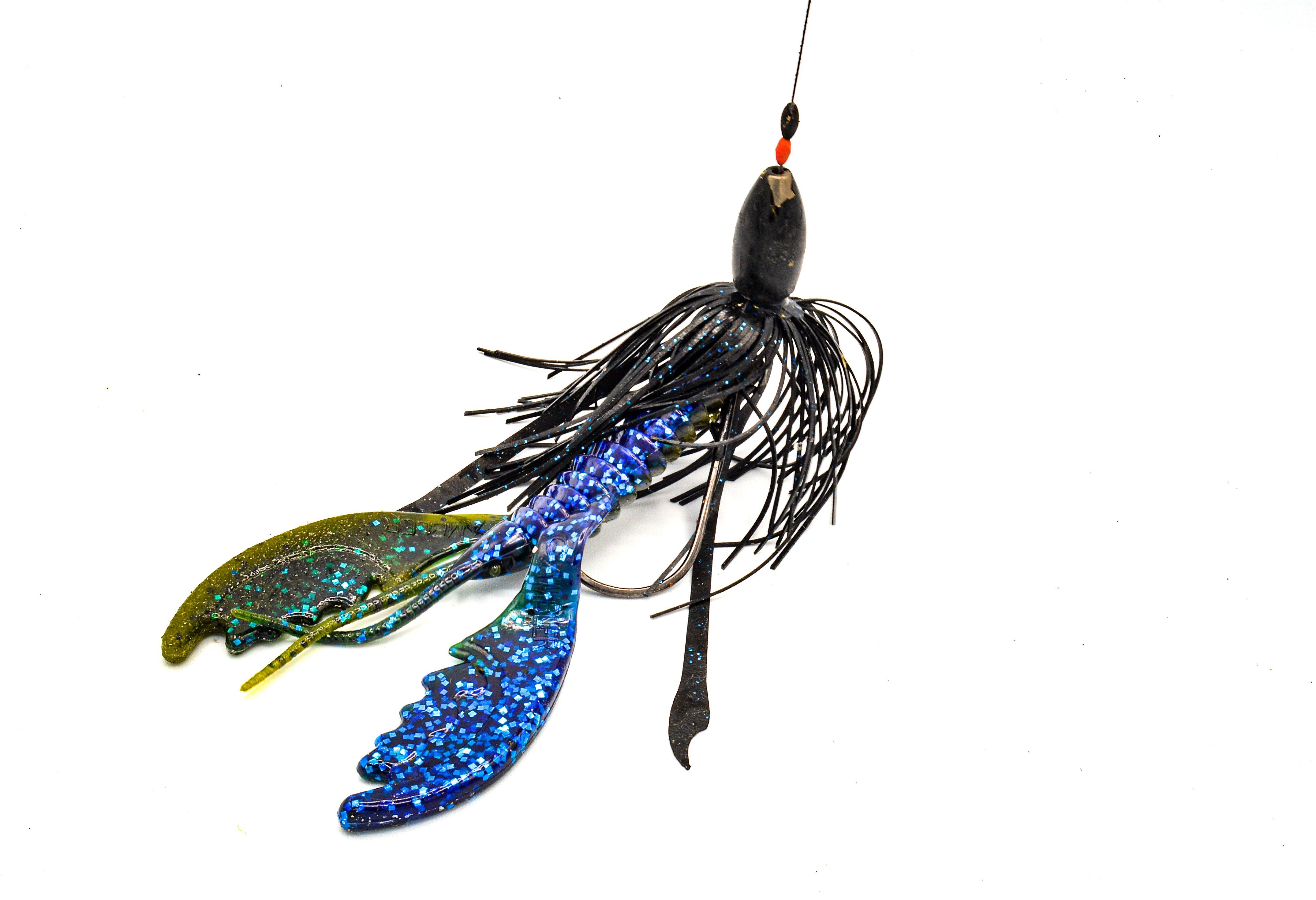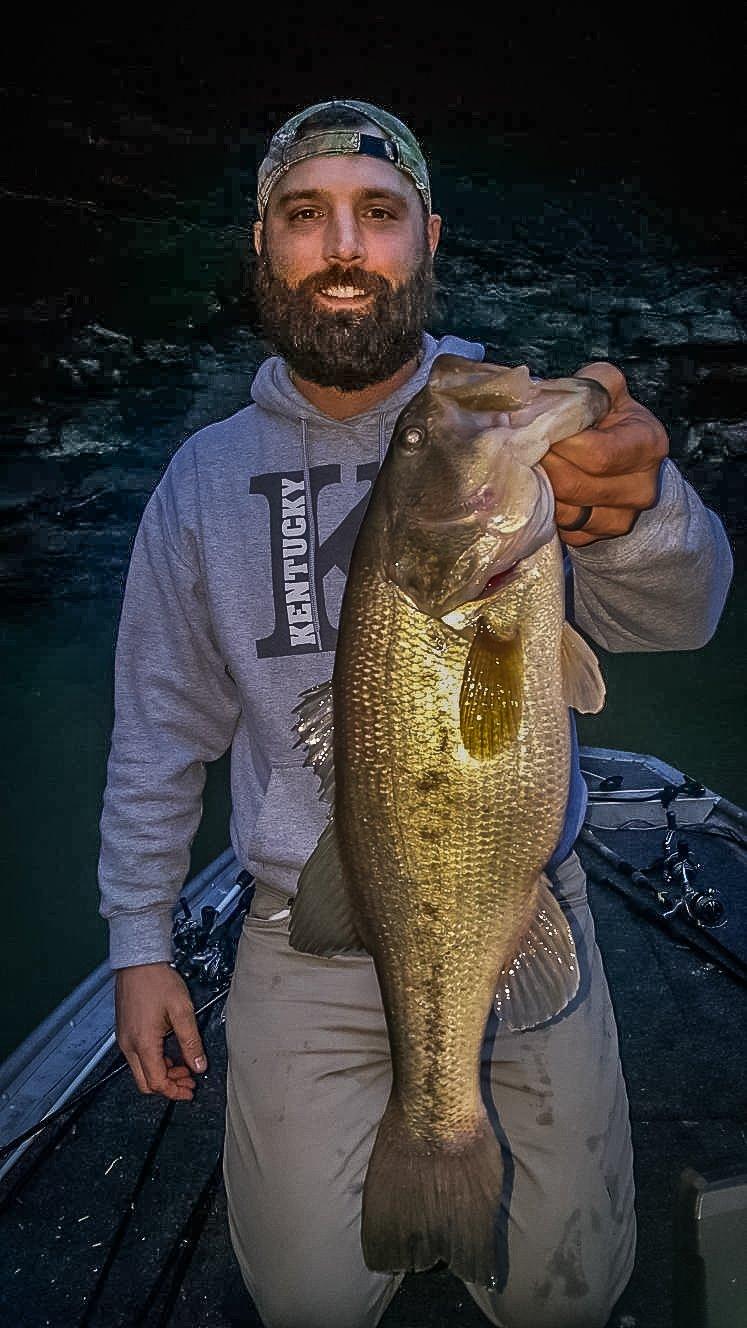When the mercury rises, you can still catch a lunker. Here’s how to adjust your strategy and land more bass this summer

No matter where you live in the country, these tactics pay off for bass fishing in warmer weather. (Photo by Millennium Promotions)
Depending on where you live, summertime can mean different things to bass anglers. Northerners will rejoice in the most active days on the fishing calendar, while bass fishermen in the South are ready for a cool-down. Regardless of where you fish, you need to adjust your bass-fishing strategy for warmer weather.
For the most part, bass’ metabolisms are at an all-time high in August. Water temperatures are up, the spawn is over, and there’s a good supply of food in the lake. This period of high activity can let you find bass fast. But the summer also brings variables that can knock off the bite. Boat traffic, algae blooms, and fishing pressure can hurt your chances. And water temperatures can get to levels where bass just become inactive.
Does that mean bass are uncatchable when it gets hot? Not really. Here are five can’t-miss tactics for the dog days of largemouth fishing. One or more is sure to pay off on your home lake, reservoir, or river, no matter where you live in the country.
1. Flip The Heaviest Cover
Big bass like grass — more in the summer than ever. They also like heavy timber, fallen-down logs, cattails, bulrushes, and more. Ultra-thick cover provides bass shady areas to cool off and hide while lying in ambush. No cover is too thick in the summertime. Just when you think you’re in too deep, a lunker will surprise you.
For starters, look for outside cover lines near deep water. Check main lake grass beds near a deep basin, or lay-downs along a creek bank. Find open areas adjacent to the thick cover hiding places, and pick areas where wind or flow regularly come in. Stay away from the backs of creeks.
Don’t Miss: The 10 Biggest Fishing Advancements of the Decade
Rigging for thick cover depends on the situation. In Florida, punch rigs weighing as much as 2 ounces are good for everyday fishing. Farther north, a heavy grass jig can work better. Either way, your bait needs to penetrate the cover and get down to the fish with ease. Efficiency is a key when flipping and punching. The more time you spend messing around, the fewer fish you’ll encounter.

Look for bass holding near a structural feature, such as isolated hard-bottomed areas and depressions. (Photo by Bill Konway)
2. Fish Deep Water With Finesse
Back in the day, going deep for summertime bass meant tossing big-lipped crankbaits or fishing vertically with spoons. Today’s game focuses more on finesse, which is much easier with the advent of forward-facing sonar.
Regardless, the overall strategy remains the same. Focus on areas with the largest bass populations near structure. You might hear of bass in open water, but bass are almost always relating to some structural feature regardless of how subtle. Changes from mud to sand, isolated hard-bottomed areas, and depressions attract bass schools. Fish also move based on how the weather pushes their food supply around. Find the bait, and you’ll find more bass
Check major main-lake points, channel swings, and areas around dams and bridges for shad. Up north, look for deep weedlines that hold young panfish. No matter where you are, always be on the lookout for schooling bass a cast or two off of weed edges.
Deep water finesse tactics revolve around spinning rods, light line, and exact applications. The go-to baits are plastics rigged on jigheads, enabling anglers to drop a lure right on the nose of bass on screen. Often, the hardest part of fishing this way is finding the fish. Remember, follow the bait and whatever controls its whereabouts, whether that be wind, current, shade lines, or subtle structure.

Heavy jigs and plastics are great for punching through the dense cover where summertime bass often hang out. (Photo by Millennium Promotions)
3. Target Boat Docks With Precision
Anglers have been pulling bass from water near boat docks for generations. The same holds true today. Docks offer bass the notable shade and cooler water mentioned earlier, but they also offer bass the opportunity to get away from it all. Numerous studies have been done tracking big bass in the summer, and the case for fishing boat docks is compelling. Lunkers have been found to stay under select docks all summer long, even with swimmers repeatedly jumping off the dock.
Successful dock fishing requires accurate casting, which is something we all could work on. The best dock fishermen make it look easy, but often their lures are doing some of the work. Try jigs with flat heads, wacky-rigged plastics, and Chatterbaits. All of these lures skip well. Another tip: spool with heavy line on baitcast outfits. It reduces the chances for backlashes.
Don’t Miss: Mississippi Reduces Crappie Limit on Popular Lakes Due to Live Sonar
Look for docks in main-lake areas and those offering abundant shade. The more cross bars, cables, and boat lifts the better. Finally, chopped-up weed mats often collect around docks from pleasure-boat traffic, serving as a great cover option for lunkers.
4. Go With the Flow
In many reservoirs and rivers, water flow is everything in the summer. Big bass gravitate to areas with current. The tailwaters around dams are a no-brainer. Feeder creeks and streams that offer running water can work, too. And discharges and culvert pipes are also productive.
I’ve been on a few rivers where culverts allow water to run in and out. On stretches of the Ohio River, in particular, commercial barge traffic pushes water through culverts creating an artificial flow. On several occasions, large bass tournaments have been won fishing the “tubes” and running the barge traffic similar to how saltwater fishermen track the tide.
Tailwater anglers know lock schedules like the backs of their hands because the increase in flow really turns on the bite. Freshwater flows can mean the same thing. Pinpoint casts around current breaking objects, and use lures that get down in slack water, but aren’t so heavy that they snag. Often, multiple set-ups are required, and losing a few baits comes with the territory.

Night fishing for bass during the summer heat often reaps the best rewards. (Photo by Ryan Rayburn)
5. Wait Until the Sun Goes Down
Night fishing isn’t for everybody. But nighttime anglers consistently catch giant bass every summer. In fact, the night bite is often drastically better, overall, than daytime angling. A big reason lies in pressure. Bass aren’t used to being fished for at night in many areas. Also, a break from relentless boat traffic helps group baitfish and offers bass more opportunities to feed.
Productive night fishing areas will be near known daytime hotspots, but open water near cover is usually best. Fish around boat docks, instead of under them, for example. Try targeting areas where weed edges meet open water, or main-lake points and structures that otherwise feel too obvious. Light, sandy beaches are also a good spot. They reflect any ambient light, giving predators like bass the edge.
Use big, dark lures, and don’t worry about heavy line. The fish couldn’t care less after dark. Fishing at night during the summer is a great opportunity to get back to heavy-handed tactics in waters that otherwise call for finesse.












